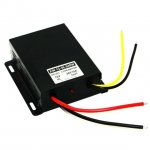Buddha.
Finally in expo white.
What about this fed into my Victron mppt 100/30 posted above? I need diodes at both the panel's input to the mppt and the booster's input into the mppt?The mppt route will work fine with correct components.
400w and 200AH will run a fridge all summer without trouble. In the winter there are capacity loss issues and low sun angle.

Last edited:

